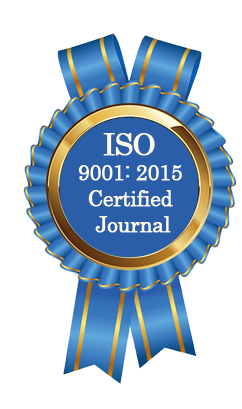| All | Since 2020 | |
| Citation | 105 | 60 |
| h-index | 4 | 4 |
| i10-index | 3 | 2 |
WJAHR Citation 
Login
News & Updation
Best Article Awards
World Journal of Advance Healthcare Research (WJAHR) is giving Best Article Award in every Issue for Best Article and Issue Certificate of Appreciation to the Authors to promote research activity of scholar.
Best Article of current issue
Download Article : Click here
Indexing
Abstract
METHODS AND RESULTS OF SURGICAL TREATMENT OF ACQUIRED TISSUE DEFECTS IN THE LIPS
Eyyad Ali Aysha*, Fadi Kash and Ghanem Ahmad
ABSTRACT
Background: Lips provide some important roles from social interaction and expressing emotion to oral competence and swallowing, and there were wide range of reconstructive options. Aim: The purpose of this study was to evaluate final outcome of acquired lip defects reconstruction. Materials and Methods: A retrospective study was conducted for the period five years (May 2017 – May 2021) at Tishreen University Hospital in Lattakia-Syria. The study included a group of patients with acquired lip defects who underwent reconstruction with various methods. Patients were classified into three group according to the size of defect; group I included patients with size defect smaller than one-third of lip (14 cases), group II included patients with defects in the size one-third to two-third(17cases), and group III included patients with defects larger than two- third of lip (1 case). Results: A total of 38 patients, 25 males (65.8%) and 13 females (34.2%) with a mean age of 59.8±6.2 years were included in the study. Cancer was the most frequent etiology of defects in 30 cases (79%), followed by trauma in 8 cases (21%). Defects were located more frequently on lower lip in 34 cases (89.5%) and defects were full- thickness in 32 cases (84.2%). 53. 1% of the defects were in the size one-third to two- third of the lip, and methods of reconstruction varied according to the size of defect. Primary closure was performed in 100% of the patients in group I. In group II; primary closure was applied in 64.7%, Karapandzic flap in 23.5%, and Estlander flap in 11.8%. Karapandzic flap was applied in patient with defect size larger than two- third of the lip. The rate of complication in group I was 28.6 % and hypertrophic scars represented the most frequent complication which observed in 14.3%, whereas in group II complications developed in 52.9% and blunting of the commissure was occurred more frequently (23.5%). Flap necrosis represented the observed complication in group III. Complications developed significantly with advanced age and in presence of smoking(p
[Full Text Article] [Download Certificate]
